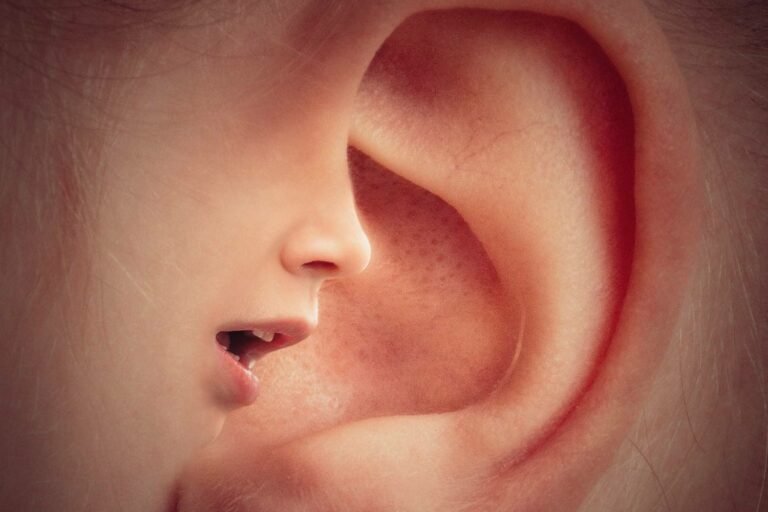Since this is something of a personal topic, I’ll begin with an admission: For as long as I can remember, I have experienced instances when I’ve been in an otherwise quiet space where there is a fan or motor running and noticed something alarming.
It could be an air conditioner, a slightly noisy ceiling fan, or the water filter in my aquarium (those are the big ones). As I’m trying to concentrate on whatever it is that I’m doing, I begin to hear voices. Sometimes they sound like a conversation taking place just beyond the range of my hearing, where I can’t make out the words but know that people are speaking. At other times I hear songs, replete with instrumental music and a singer. Again, I can’t make out the lyrics, but it’s definitely a song. Then, when I shut off the motor creating the background noise, they go away.
This has caused me considerable consternation. For decades I never mentioned it to anyone. Was I losing my mind? I will confess to our readers that it was, at times, frightening. Then, a couple of years ago, I finally threw caution to the wind and told my wife. She took an uncomfortable pause before confessing that she heard such things too. I wasn’t sure if that made me feel better or if it was simply confirmation that our house was haunted.
Earlier this year, I decided to finally do some searching and to present this conundrum to my followers on social media. When I described it, I was shocked at the number of people who responded by expressing some variant of, “OMG. I thought I was the only one!” Those responses led me to do more digging and I discovered that there was a significant amount of admittedly scanty scientific research that had been done on this phenomenon. It’s known as auditory pareidolia, and it’s probably more common than you might suspect.


WHAT IS THIS PAREIDOLIA OF WHICH YOU SPEAK?
The most common form of pareidolia that pops up, particularly in UFO research, is visual pareidolia. It’s the common phenomenon that causes people to see faces or animals in clouds or random patterns in wallpaper or paint splatters. Most of us have, at times, seen such images before brushing them away as the random interactions of mundane visual stimuli.
That doesn’t mean that visual pareidolia hasn’t caused its own share of issues. While the phenomenon has been understood since at least the days of Leonardo da Vinci, it still frequently crops up in the modern era. Our human brains can and will create meaning from randomness, often determined by our own life experiences and systems of belief. In 2004, someone paid $24,000 for the right to display a grilled cheese sandwich that viewers swore had the image of the Virgin Mary embedded in it.
And yet the vast majority of people who see a figure in random displays at least recognize that there is a rational explanation for visual cues that lead us to look for familiar patterns. “Voices in your head,” however, can be far more disturbing and less easily explained.
BUT I’M HEARING THINGS. AM I GOING CRAZY?
The first and most obvious question involved whether or not people experiencing the phenomenon are suffering from some sort of mental disorder. Dr. Bauman told us, “No, you are not crazy and it is not a mental condition. Rather, this is a normal phenomenon as your brain tries to come up with its best guess as to what pattern of sound it is hearing. Because these monotonous background sounds don’t have much of a distinct pattern in the first place, it is hard for it to find a good fit. However, it attempts to fit the closest pattern it already has in its memory to what you are hearing.”
Dr. Bauman went on to say, “Most of the time, it does a good job, but sometimes the closest pattern it selects isn’t close at all, but really out in left field, so to speak. Thus, you may hear a fan sound, not as a fan sound, but as some sort of music or speech or other sounds.”
IS AUDITORY PaREIDOLIA ACTUALLY COMMON? AND HOW DOES IT WORK?
The Debrief asked Dr. Bauman how common this phenomenon is and why it seems so different from visual pareidolia, which few people view as a potentially disturbing disorder. In terms of how common it is, he told us, ” I’ve never seen any figures for audio pareidolia–but it is highly likely that everyone has encountered audio pareidolia at some point in their lives whether they realized it or not. Probably everyone has heard some vague background sound for which their brains have problems finding the right pattern match.”
In terms of why people aren’t bothered by seeing faces in the clouds but can be confused by voices in their heads, Bauman explained the difference. ” With audio pareidolia, you don’t know that you are experiencing an illusion, and think it is the real sound when it’s not. That’s a big difference. So in the former case you KNOW it is not real but in the latter case, you believe it to be real–at least initially.”
We asked Dr. Bauman if the brain processes audio and visual information differently, leading to these disparate perceptions. He agreed that science is still working on perfecting data on this subject. ” I’d say they are different processes, but I don’t really know. Are all visuals stored as patterns in our brains like auditory sounds are?”
SO HOW DOES AUDITORY PaREIDOLIA TRICK PERSON’S BRAIN LIKE THIS?
There clearly hasn’t been a lot of hard data gathered on this question, but there have been ongoing efforts to understand it more clearly. The Debrief checked in on the work of Dr. Robert Remez of Barnard College and Columbia University. He was the leading author of an early study of how the human brain “perceives speech” without traditional speech cues being present.
Test subjects in this study were played sinusoidal waveforms in a variety of patterns. There was no actual human speech embedded in the audio patterns, only varying sinusoidal waves. Some participants were told that the audio track contained a short bit of speech generated by a computer and given the sentence supposedly included. Others were only told there was “some speech” included.” A control group was only asked to listen to the wave patterns and document what they thought they heard.
Most of the subjects who were told of a sentence to listen for “heard” it. Even those who were not given a specific sentence managed to find a meaningful sentence to report in a majority of cases. But most surprisingly of all (at least to a layman like myself) was the fact that several of the test subjects who were told nothing of what they would be hearing managed to pick out a sentence from it. So clearly, our brains are often working overtime to find patterns in the most random of input sources.


SO IF I’M HEARING THESE VOICES OR SONGS, WHAT SHOULD I DO?
Auditory pareidolia is clearly a very real thing and it’s probably more common than many of us may have imagined. But if you are experiencing it, what, if anything, should you do about it? The Debrief turned back to Dr. Bauman to see what advice he gives to people experiencing this phenomenon.
“I tell people a number of things,” he said. “First, to identify the source of their audio pareidolia. For example, if they hear it only in their bedroom, do they have a fan running? If so, does the illusionary sound stop the instant they turn the fan off? If so, it is audio pareidolia. And if it starts again as soon as the fan starts again, that is further confirmation that they are experiencing audio pareidolia. The same applies to fridges, furnaces, air-conditioners, etc.”
“Then if it is just a fan, I suggest they swap it out for a different fan (if they have another fan in the house) and see if another fan causes the same effect,” he continued. “Often, it doesn’t. So they can choose to put up with their audio pareidolia or purchase a different fan that doesn’t cause audio pareidolia.”
For what it’s worth, I will share my own personal experience after going on this journey. After learning what was actually the root cause of this phenomenon, I have found myself experiencing far fewer instances of these “voices in my head.” And when it does happen, generally when I’m working or reading in a room that is otherwise quiet aside from the background hum of a fan or water pump, as soon as I recognize what is happening, it tends to stop. I sincerely hope this helps any of our readers who may have been experiencing auditory pareidolia and dealing with it in silence.
Follow and connect with author Jazz Shaw on Twitter: @JazzShaw
Don’t forget to follow us on Twitter, Facebook, and Instagram, to weigh in and share your thoughts. You can also get all the latest news and exciting feature content from The Debrief on Flipboard, and Pinterest. And subscribe to The Debrief YouTube Channel to check out all of The Debrief’s exciting original shows: DEBRIEFED: Digging Deeper with Cristina Gomez –Rebelliously Curious with Chrissy Newton

